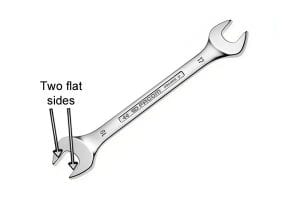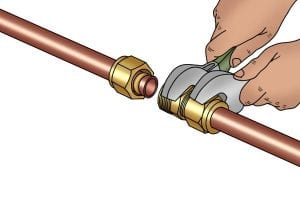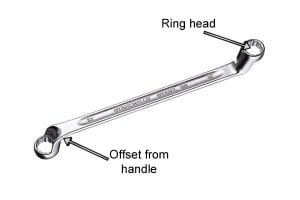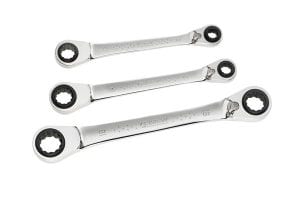What are the different types of spanner?
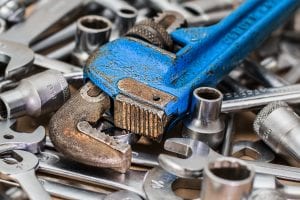
There is a huge range of spanners. Some are designed for general jobs, others for specific tasks.
At Wonkee Donkee Tools we have compiled a list of the most common types of spanner that you will come across and what they are used for.
Open Ended Spanners
Open-ended spanners have U-shaped jaws with an opening the width of the nut or bolt head. They have two flat sides which grip opposite sides of a fastener in order to loosen or tighten it.
Basin Tap Wrenches or Spanners
Basin tap wrenches or spanners are designed for use during plumbing on hard-to-reach back nuts or compression fittings in deep recesses, such as those under sinks, that cannot be reached with any other spanner type.
Compression Fitting Spanner
Specifically designed for plumbing work to join two pipes together, compression fitting spanners have the correct profiles to tighten compression nuts. They come in two sizes to fit the nuts used on standard 15mm or 22mm copper piping.
Ring Spanners
Ring spanners are simple spanners with a profile that is enclosed in a ring. The heads are usually offset from the handle so it is easier to reach the fastener.
Immersion Heater Spanners
Immersion heating spanners are very specialised tools designed to fit or remove immersion heating elements in an immersion heater. They have an octagonal profile with an 86mm diameter.
Combination Spanners
Combination spanners are a simple spanner made up of a shaft and two spanner heads: one open-ended head and one ring head. The heads are usually at a 15 degree angle to the shaft to allow better access to the nuts or bolts.
Flare Nut Spanners
Flare nut spanners are designed for turning fasteners that attach pipes to another component, for example, vehicle brake pipes. The jaws of the head curve around so there is only a small opening between them. The pipe can fit through this opening and then the spanner can be moved over the fastener.
Podgers
Podgers are spanners with a profiled head at one end and a spike on the other. The spike or ‘drift pin’ is pushed through the bolt holes of two workpieces to line them up so the bolt can fit them through easily.
Pin Spanner
Pin spanners are designed for fitting and removing lock nuts. The nuts have two holes on opposite edges of the nut. Two corresponding pins on the pin spanner fit into the holes in order to grip and turn the lock nut.
Ratchet Spanner
Ratchet spanners use a ratchet system allowing the fastener to be turned in one direction but not the other. This means the user can turn the spanner back and forth to perform the task without having to remove and replace the spanner on the fastener every time an obstacle is reached.
Insulated Spanner
Insulated spanners protect the user from electric shocks when working on live wires. Any spanner type can be insulated.
Box Spanner
Box spanners are made from metal tubing. They usually have two profiles, one at each end. Because the profiles are at right-angles to the shaft, the tool can reach into confined spaces easily. A ‘tommy bar’ is usually used to turn them.
Spark Plug Spanner
Spark plug spanners are specialised box spanners for fitting spark plugs in confined spaces in an engine. They may have a fixed or removable tommy bar.
Flex-Head Spanner
Flex-head spanners have heads that are suspended in a frame so that they can swivel back and forth allowing the tool to be used at different angles. Many spanner types can have flex-heads.
Scaffold Spanner
Scaffold spanners usually have flexible socketed heads (a short box head on a shaft). They are designed for fitting and taking down scaffolding used for building work.





